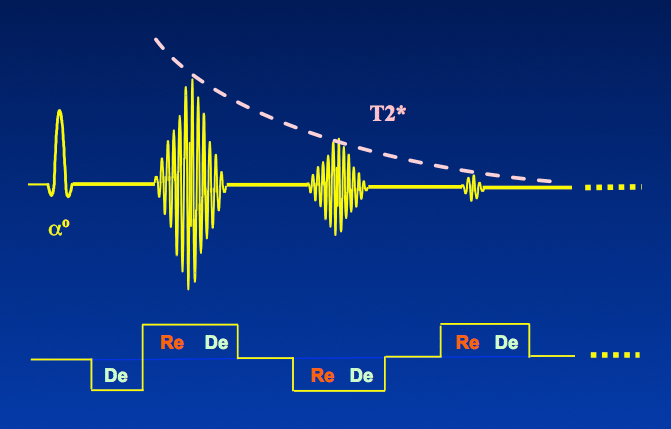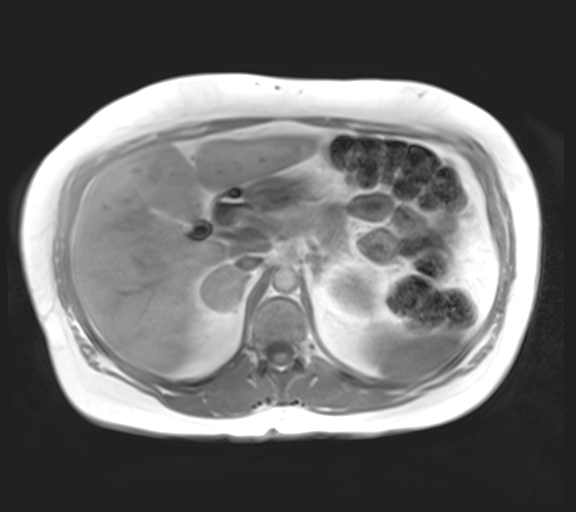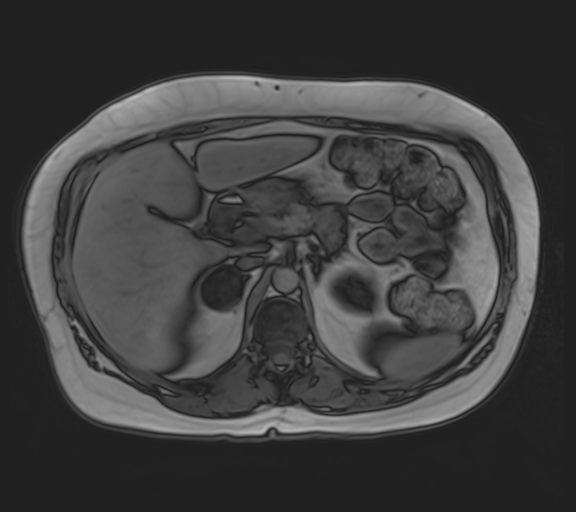The same gradient reversal process used to create a single gradient echo can be repeated to produce two or more additional GREs after a single RF-pulse. This is known as dual (or multi-) echo GRE. Generating multiple GREs is possible as long as complete loss of the transverse magnetization by T2* relaxation has not yet occurred.
|
As shown in the diagram, the second half of the first upward gradient lobe dephases the signal. The first half of the second downward lobe rephases these spins and generates a second echo.
The process may be repeated, but because of T2*-decay, the maximum usable number of echoes is only 3-4 in most cases. The echo times for each echo are different and commonly denoted TE1, TE2, etc. |
|
One common applications of multi-echo GRE is for acquiring fat-water "in-phase" and "out-of-phase" images using two different TE's. This is a common technique in body MRI to detect characterize fatty livers, adrenal adenomas, and other lesions. This will be discussed more completely in a later Q&A.
|
|
A second important application for multi-echo GRE is in spinal imaging using a relatively new technique known as MERGE (GE), MEDIC (Siemens), or M-FFE (Philips). In this technique three or more GREs are obtained after each RF-pulse. Rather than being viewed individually, the data from these echoes is combined to create a single image that has been shown to have excellent suppression of CSF flow artifacts and is useful for displaying internal architecture of the spinal cord. This technique will be described more completely in a later Q&A.
|
Advanced Discussion (show/hide)»
No supplementary material yet. Check back soon.
References
Elster AD, Burdette JH. Questions and Answers in MRI, 2nd ed. St. Louis: Mosby, 2001, pp 102-122.
Elster AD, Burdette JH. Questions and Answers in MRI, 2nd ed. St. Louis: Mosby, 2001, pp 102-122.
Related Questions
What is a chemical shift artifact of the second kind?
What is meant by in-phase vs out-of-phase imaging?
We have been using a sequence called MERGE for spinal imaging that shows excellent contrast between cord, CSF and disk. How does this work?
What is a chemical shift artifact of the second kind?
What is meant by in-phase vs out-of-phase imaging?
We have been using a sequence called MERGE for spinal imaging that shows excellent contrast between cord, CSF and disk. How does this work?




